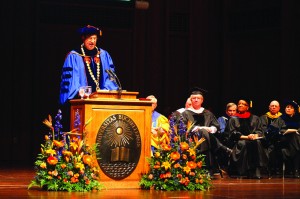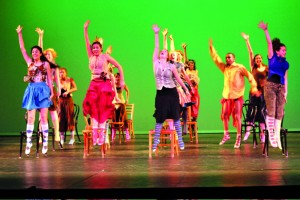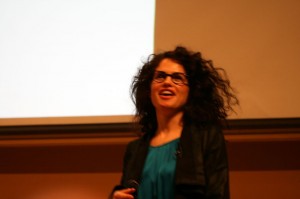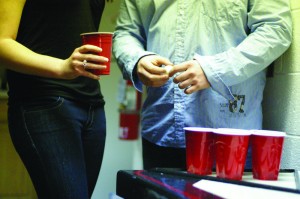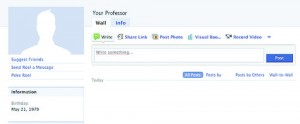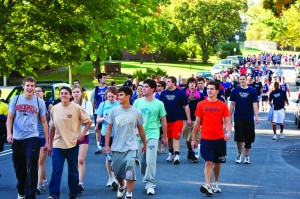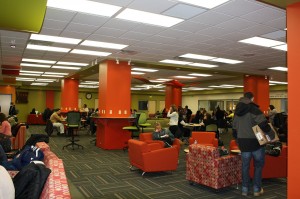
By Sam Krassenstein
Contributing Writer
After months of planning by a committee partially comprised of students, the new student space is now open and equipped with plentiful couches, open walls, mobile chairs and tables.
The bookstore’s move to downtown Lewisburg opened more than 12,500 square feet of space in the Elaine Langone Center (ELC). Following Winter Break, the student space is now home to the largest indoor and most brightly colored student area on campus.
“The new student space is highly attractive and accessible to all students. I think it gets a lot of traffic in an area that used to be under-utilized. It’s greatly needed for the students and it’s nicely decorated and attractive to everyone. I think it gives student organizations a lot more visibility and it allows students to see what BSG [Bucknell Student Goverment] and ACE [Activities and Campus Events] are doing. Hopefully it will allow more programming to happen and overall, it’s highly useful and needed by the students,” said Zack Beltran ’13, a commissioner for ACE.
It features a modern décor that sports bright orange and green in the walls and furniture that has resulted in some dubbing the space “That 70s Lounge.”
The departure of the bookstore to Market Street not only starts a new era for downtown Lewisburg but also for the ELC.
Most spaces on campus have to be reserved through the Events Management Office (formerly RICS), but this new area cannot be reserved except for very specific social functions on Friday or Saturday evenings, which means that most of the time, the space is open for everyone.
In addition to a much-needed place to do work, eat lunch or just hang out, the space also serves as the new home to the Campus Activities and Programs (CAP) Center office which used to reside on the third floor of the ELC.
Functions that used to belong to the bookstore such as ELC Mall Sales and the Campus Box Office will remain in the area but will be run out of the CAP center ffice.
In addition to the CAP Center relocation, students and faculty can also find the new post office located much more conveniently than it was in Marts Hall.
These changes mark an effort by the University to create a more traditional student union space on campus which also houses organizations such as BSG and ACE.
“The great thing about the new student space is that it brings BSG, ACE and the CAP Center all together in a convenient location that is easily accessible to students. Our office door is open more hours than it is closed and the traffic of the new student space definitely adds to the transparency that BSG strives for,” BSG President Phil Kim ’12 said.
In addition to the new offices, there is even a conference space that sports an Idea Paint wall that allows people to write directly on the wall using dry erase markers and has technological functions that allow any student organization a closed space to work effectively in brainstorming as well as in giving or preparing presentations.
That same Idea Paint can be found up on the third floor of the ELC in the new Dean of Students Office which is the home to orientation, Greek life and leadership programming.

